From lovingly observed portraiture to rigorously made, exquisitely detailed sculptural pieces, Emily Jo Gibbs’ work demonstrates mastery of technique, as well as a keen sensitivity for concept.
The artist’s work can be found in several permanent museum collections including the V&A, London and The Museum of Fine Art, Houston. She is a member of the 62 Group of Textile Artists and in 1998 was formally elected as a Fellow of the Royal Society of Arts.
Alongside her commission based Art practice Emily teaches regularly at West Dean College. Between 1993 and 2006 Emily was the Creative Director of Emily Jo Gibbs, luxury handbags.
In this interview with Emily we discover how working commercially for many years spurned a yearning to create something personal and thought provoking. We’re also given an insight into 3 distinct periods of a 20 year career spanning fashion, 3 dimensional work and 2 dimensional embroidery.
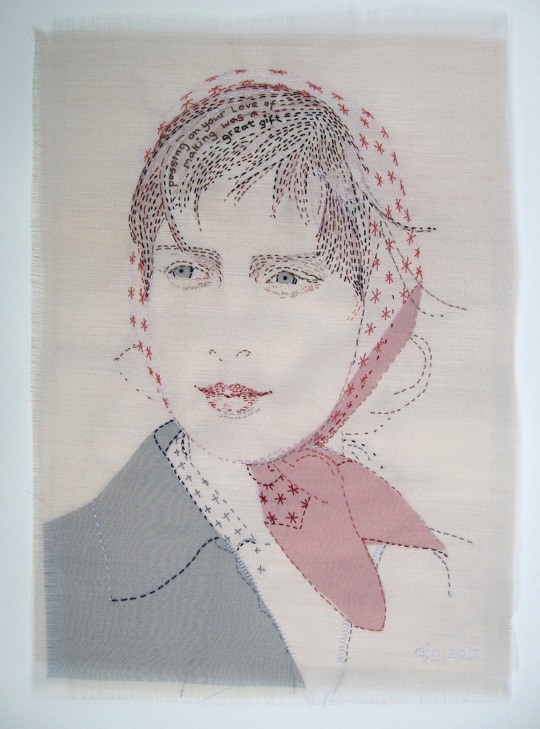
A childhood filled with making
TextileArtist.org: What initially captured your imagination about textile art?
Emily Jo Gibbs: I’ve always enjoyed making things. I have a real appreciation of colour; I love fabric and the immediacy of working with textiles. It is the process that captures me, drawing a line with stitch, being able to move the line again and again, the ability to vary the colour or intensity of the mark.
What or who were your early influences and how has your life/upbringing influenced your work?
When I was small my mum really encouraged me and taught me how to sew. We were always making things together and my mum had seemingly endless patience for different projects I devised. I was given a singer sewing machine for my 6th birthday; a childhood filled with making gave me real confidence. I didn’t take Textile O and A levels however, I think I was so confident I felt I would be better served to learn new things, other subjects. Oddly I didn’t see textiles as a career path and I was very intimidated by fashion.
The juxtaposition of hard and soft materials
What was your route to becoming an artist?
After a fantastic 3d foundation year at Ravensbourne, I went on to study Wood Metal and Plastics at Wolverhampton. I chose the course because I wasn’t ready to specialise and it wasn’t until my final term that I started making fashion accessories in metal and textiles. I love the juxtaposition of the hard and the soft materials and the different textures. A year after graduating I set up my own evening bag business with a Princes Trust Loan, I was very fortunate and my business took off really quickly. The next ten years were fast paced, hugely exciting and at times glamorous! I sold my handbags to stores all around the world. The learning curve was steep and I put in a vast amount of making hours, during this time I defined my self as a maker, more specifically a bag maker.
In 2005 I won an award to make a new body of work. I was very excited to be making new work for a different audience but I found the change in pace between running a fashion driven handbag business and establishing myself as a textile artist quite challenging at times. It was around this time that I applied to the 62 Group to become a member
In 2010 determined to make work that was personal and creatively rewarding, I embarked on a series of portraits. Initially I made portraits of my children and embroidered them with my thoughts, wishes and aspirations. The message isn’t a sentimental one, but rather a list of instructions. Advice that might help them to navigate the contradictory messages that life presents us with. I am very interested in the mixed messages we are bombarded with and how we navigate and disseminate this information.
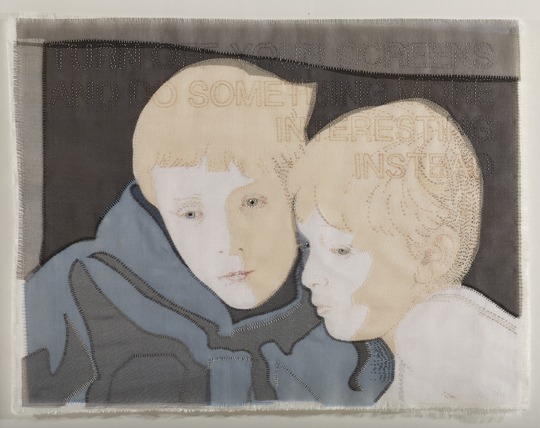
A non sentimental message
What is your chosen medium and what are your techniques ?
Essentially I hand stitch layers of silk organza. I use mercerised cotton rather than embroidery thread, and so far because my work is small I haven’t found the need to work on a frame.
How would you describe your work and where do you think it fits within the sphere of contemporary art?
My current practice mainly focuses on hand stitched textile collages, studies of my family that examine the relationships between parents and their children, the joys and the frustrations.
This work came about after a long period of making work for a commercial audience; I was determined to make work that was personally and creatively rewarding. I embarked on a series of portraits of my family, embroidered with my thoughts, wishes and aspirations. These intimate studies constructed from layers of silk organza and hand stitch, contain within them lines of embroidered text. These lines combine into letters to the protagonist and they convey a love story. The message isn’t a sentimental one, but rather a list of instructions that might help a person who is growing up to navigate the contradictory messages parents and community give to children. I am very interested in the contradictory nature of our society, the mixed messages we are bombarded with and how we navigate and disseminate these messages.
A subtle textile collage
Tell us a bit about your process and what environment you like to work in?
The studies are made from multiple layers and pieces of silk organza that are arranged to create a subtle textile collage, this is then tacked together before being hand stitched. I use tiny coloured stitches to draw lines on to the collage. The portraits are from photographs, in my latest series ‘Kids Today’ the children have sat for their photographs, I’m enjoying the different sizes/ages of children in essentially the same frame. My still lives are made from my drawings and I enjoy stitching with the objects in front of me, to reference.
I work from home, I like to sit at the kitchen table in front of French windows because the light is so good. I have a metalwork bench in the garage but I do far less metal work at the moment, my flat work has taken over.
Do you use a sketchbook?
I enjoy drawing and I draw still lives of twigs and things in jars before making them into embroideries. I also regularly draw portraits from life.
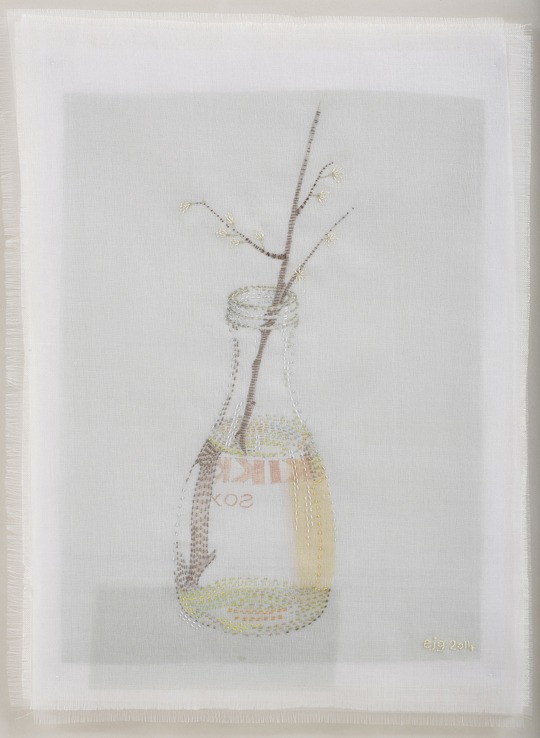
What currently inspires you and which other artists do you admire and why?
I’m currently working on a new series of portraits for an exhibition in October called Kids Today. I live on a small cul-de-sac in south east London and very unusually in 2015, lots of children aged from 3 to 13 (including my 2 boys) play games together in the street. They ride bikes and roller skate and dress up and make movies. They climb lamp posts and kick balls and fall out and make up. They have picnics and water fights and they grow up together.
In this series they are all sat at my kitchen table, most eager to take part in the project, some less sure but keen not to miss out.
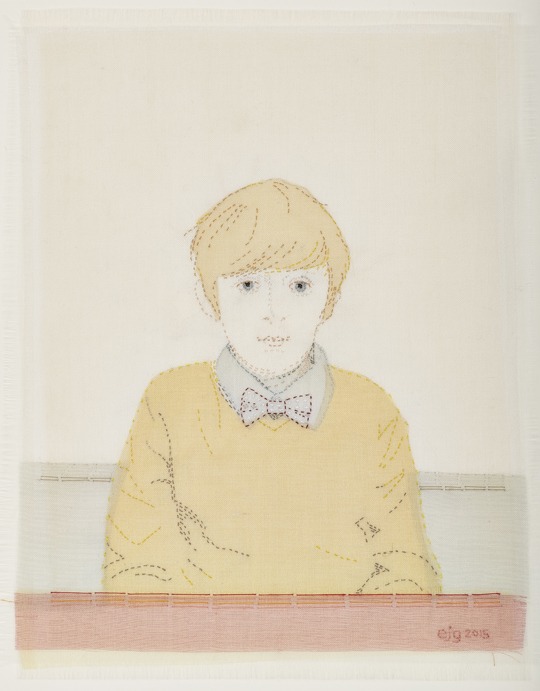
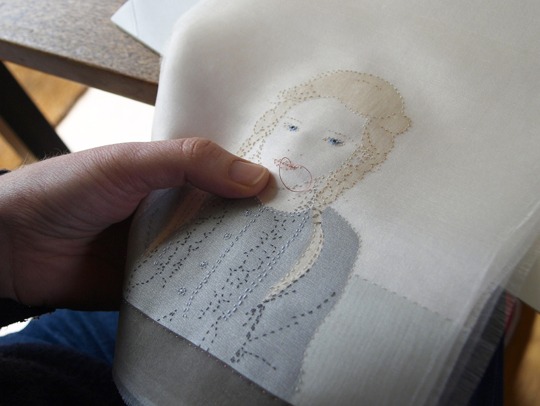
I’ve recently been going to a class at the Royal School of drawing taught by Ishbel Myerscough.
I’m very inspired by the way Ishbel paints, her pictures capture a true likeness of the person but aren’t photographic, I also love her attention to detail too.
Yesterday we went to see Alexander MacQueen: Savage Beauty at the V&A, what a spectacular show. One of my favourite pieces was the yellow glass bead and brown horse hair dress from his Eshu collection, autumn/winter 2000–2001. The glass beads resemble moss and they looked like they have grown, it is stunning; the photos don’t do it justice I’m so glad I’ve seen the real thing.
Universal stories
Tell us about a piece of work you have fond memories of and why?
I’m hugely proud that my Horse Chestnut bag is in the V&A collection.
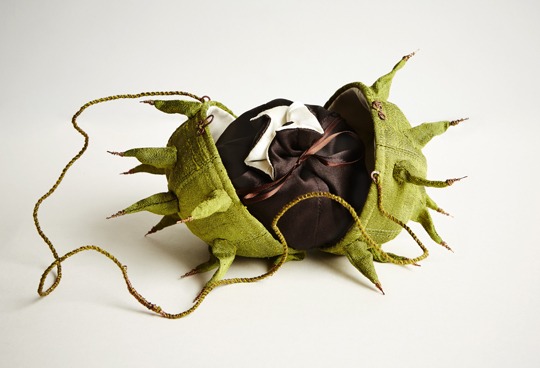
How has your work developed since you began and how do you see it evolving in the future?
Over my (so far) twenty year career in making I feel like I have had three distinct periods. Handbags, Vessels and now ‘Flat Work’. I’m very excited to be working on a series of small portraits and feel this idea will translate well to other communities. I’m very interested in finding new audiences and telling different stories perhaps by working with distinctive groups or museum collections. I’ve found the stories I tell, although extremely personal are also universal.
What advice would you give to an aspiring textile artist?
I think what ever your medium, the most important thing is having something to say, a passion.
Make work you care passionately about and then to get out there and show it to people. You can’t hide away hoping to be discovered you must market your work. Join/create support networks it can be very isolating working on your own.
Can you recommend 3 or 4 books for textile artists?
The art books I have really enjoyed recently are:
- Angie Lewin, Plants and Places
- Mark Hearlds, Work Book
- The Art of the Handbag, Crazy Beautiful Bags
What other resources do you use? Blogs, websites, magazines etc.
- www.thedesigntrust.co.uk
- www.creativeclerkenwell.com
- www.aestheticamagazine.com
- www.craftcentral.org.uk
- Crafts magazine
- Selvedge
- Embroidery magazine
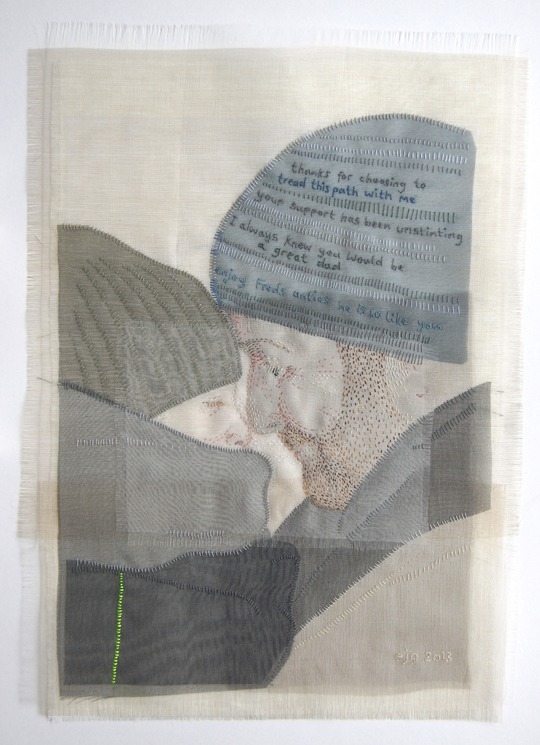
What piece of equipment or tool could you not live without?
I would really struggle without my glasses, I’d have to make big work. Oh and sharp scissors I couldn’t live without them, big and small pairs.
A wealth of techniques
Do you give talks or run workshops or classes? If so where can readers find information about these?
I teach classes at West Dean College my next class is Precious purses and reticules – in silk, silver and stitch December 7–10. Suitable for all, course no. 3D5818
This is a very exciting course because we spend the first day in the metal work room making purse frames and handles, that we then use in the textile studio when constructing our handbags.
Students discover a wealth of techniques to create unique decorative silk bags or reticules with delicate metal frames or handles. You will make your bag from start to finish and learn various construction methods for making rounded shapes, ridged box shapes or soft sided bags to decorate with silk paints, layering and embroidery.
How do you go about choosing where to show your work?
I look for Galleries or Shows which have reputations for showing the work of Artists I admire and respect and locations that sell work in a similar price bracket to mine.
To find out more about the artist visit www.emilyjogibbs.co.uk.
Got something to say about the techniques, materials and processes used by this artist – let us know by leaving a comment below.
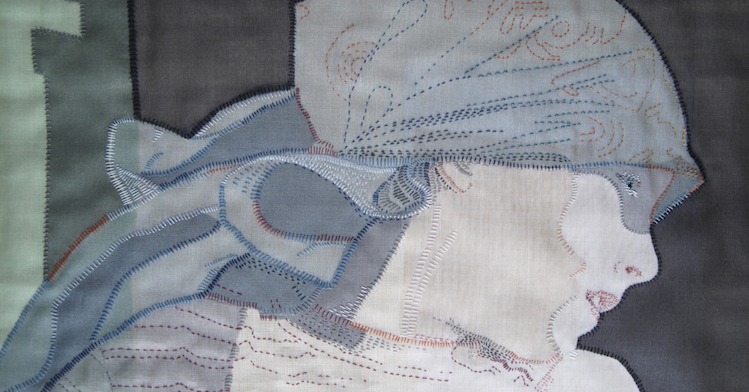

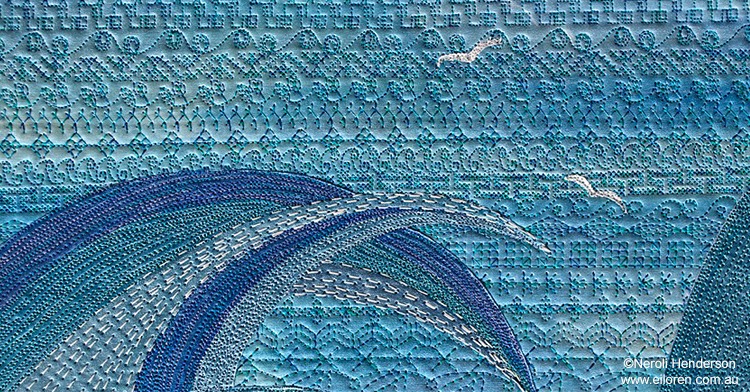
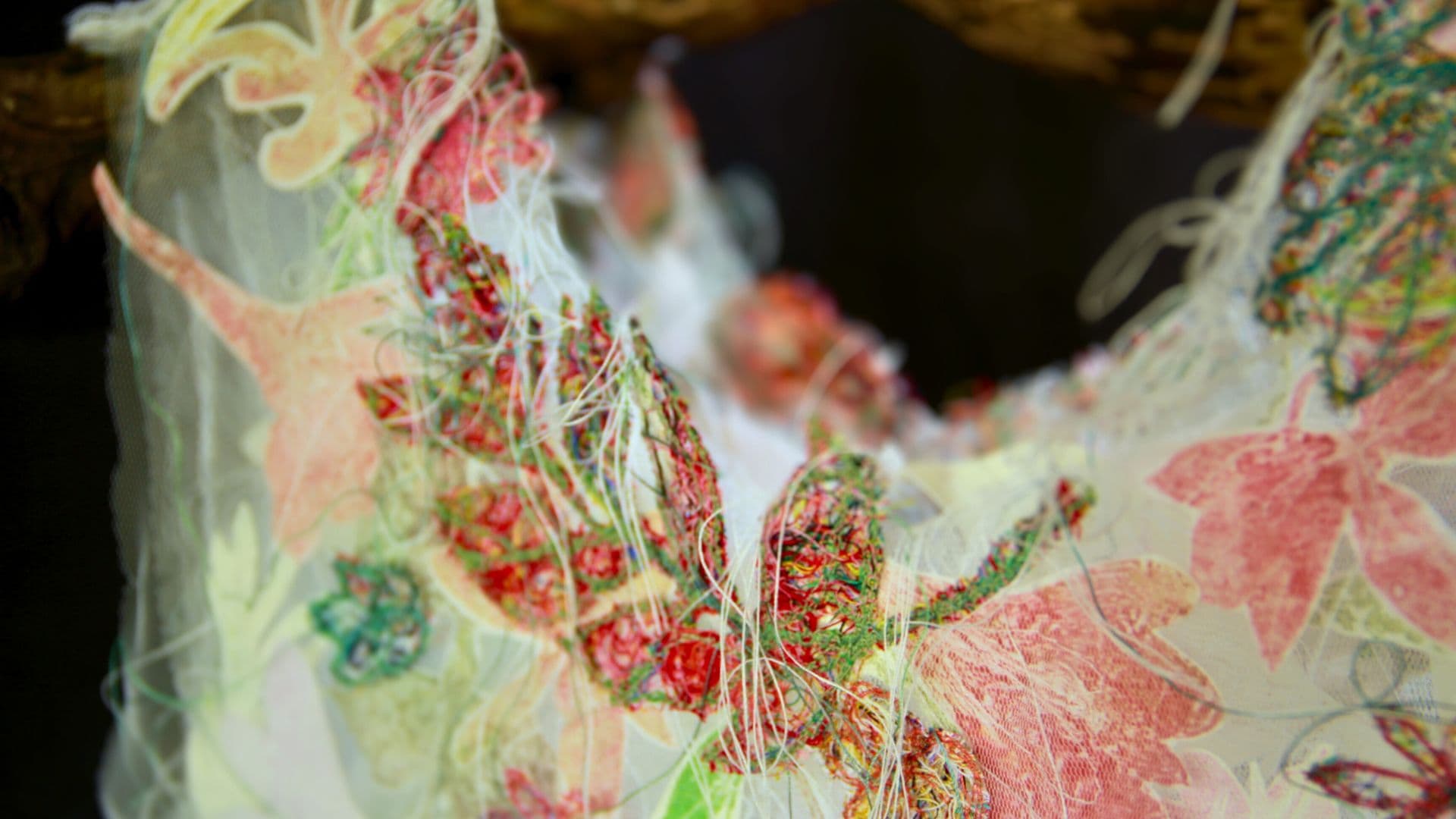
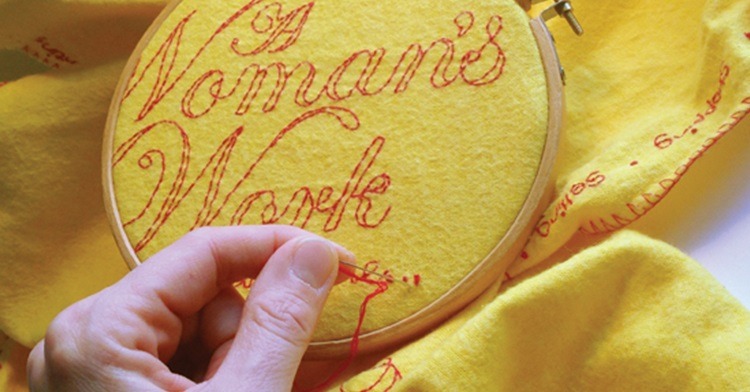
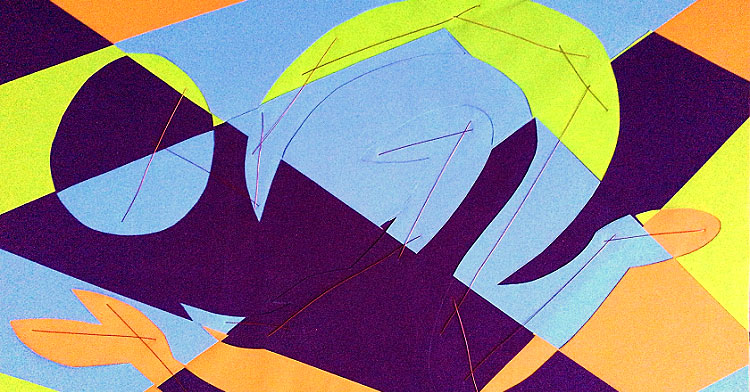
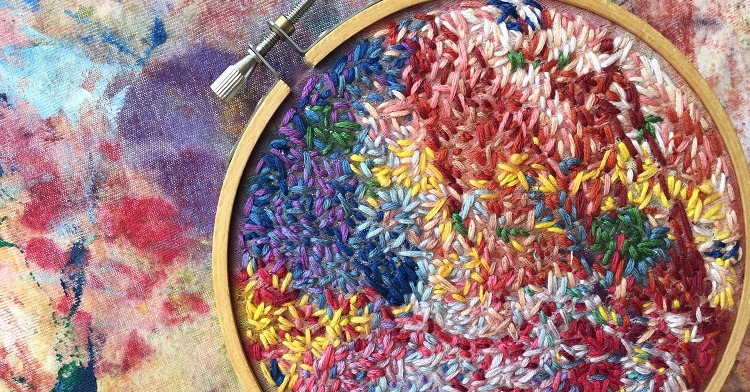
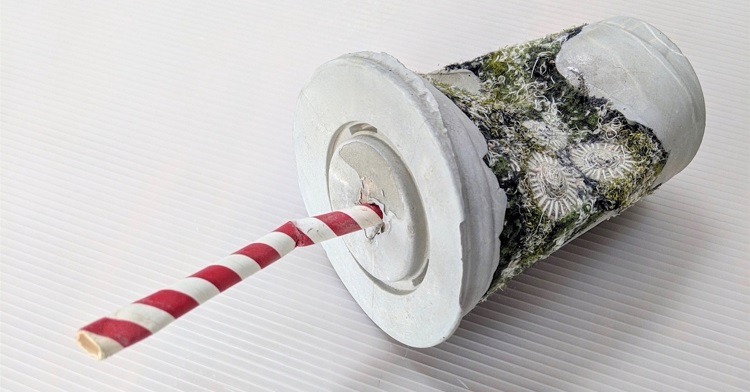
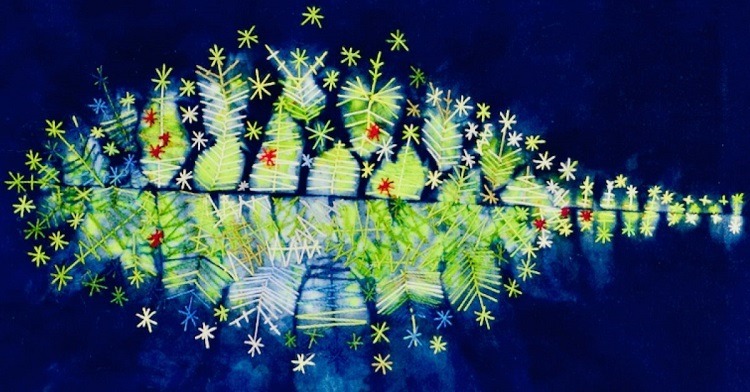
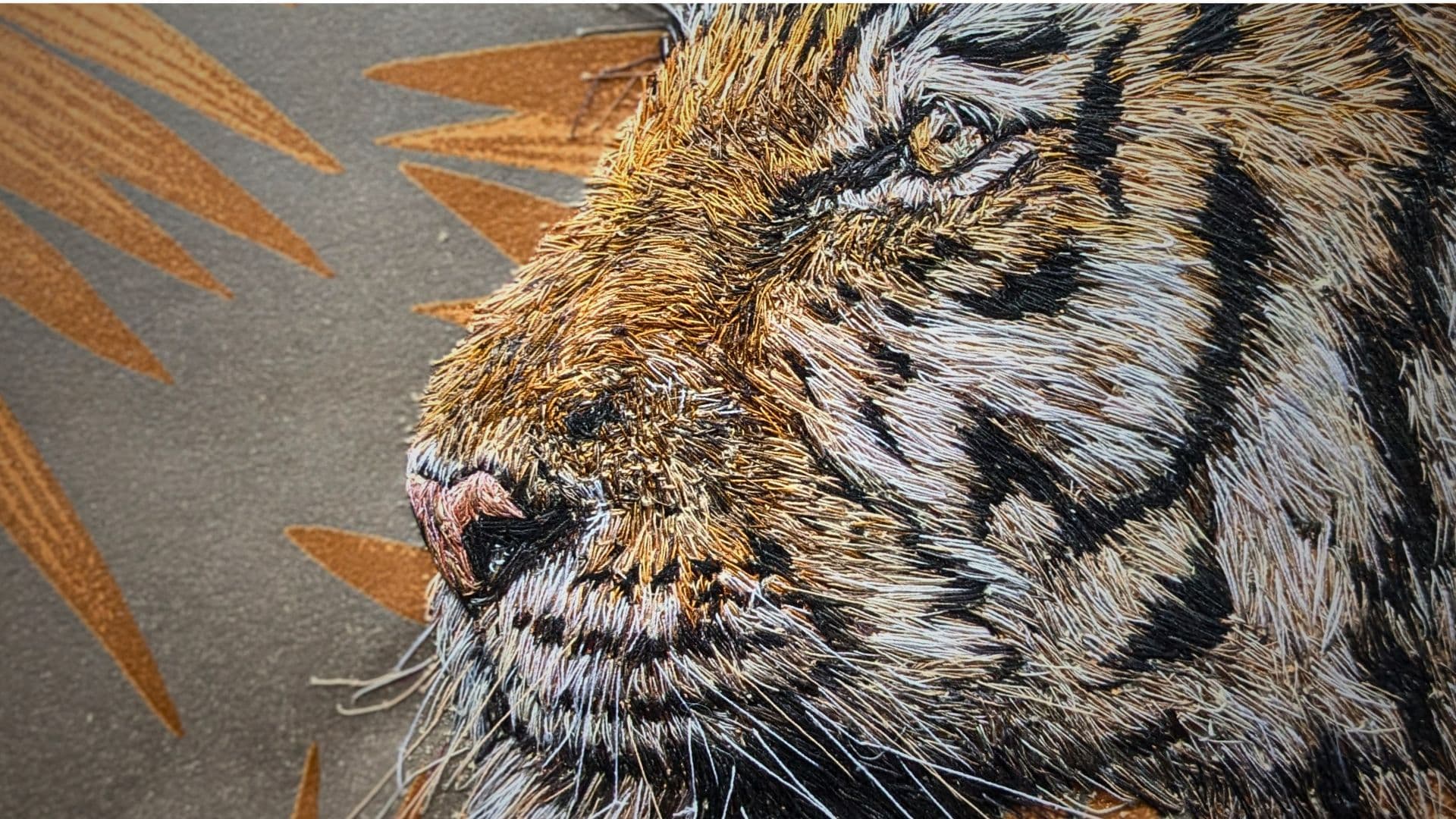
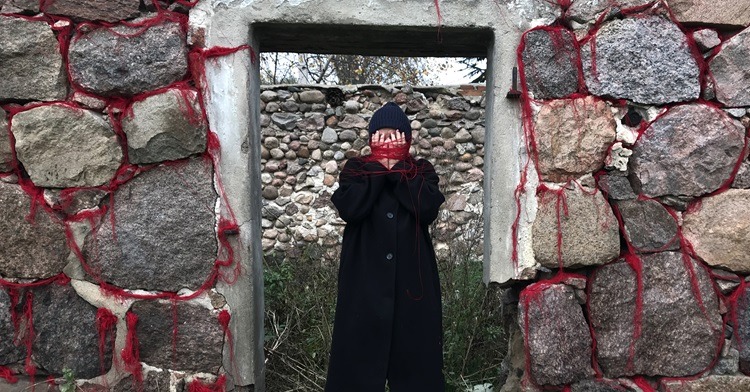
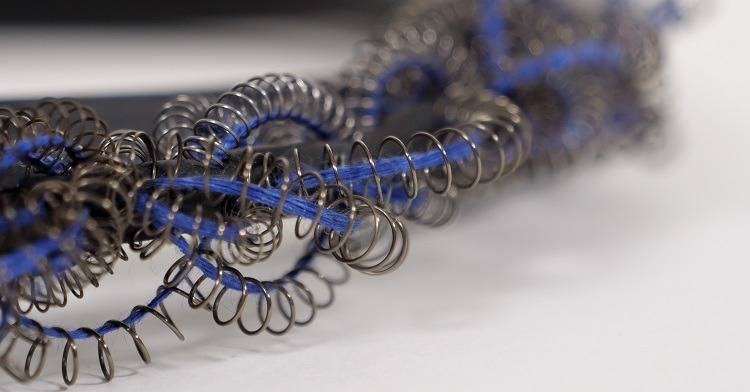
Comments